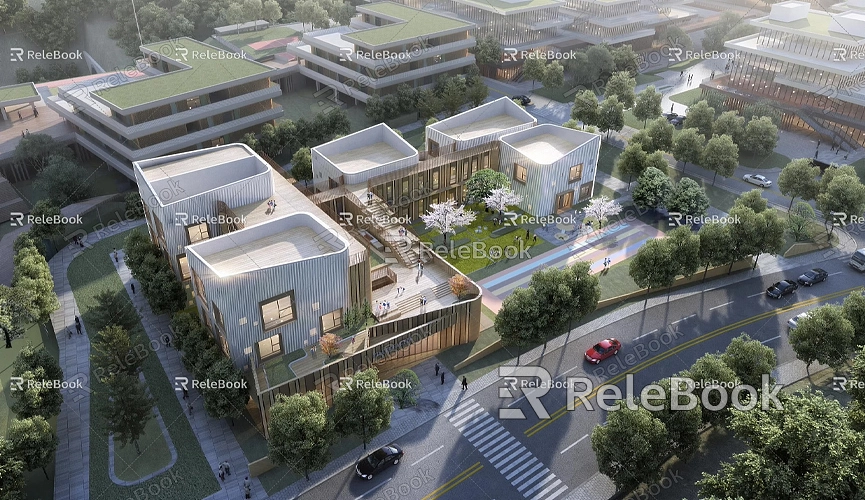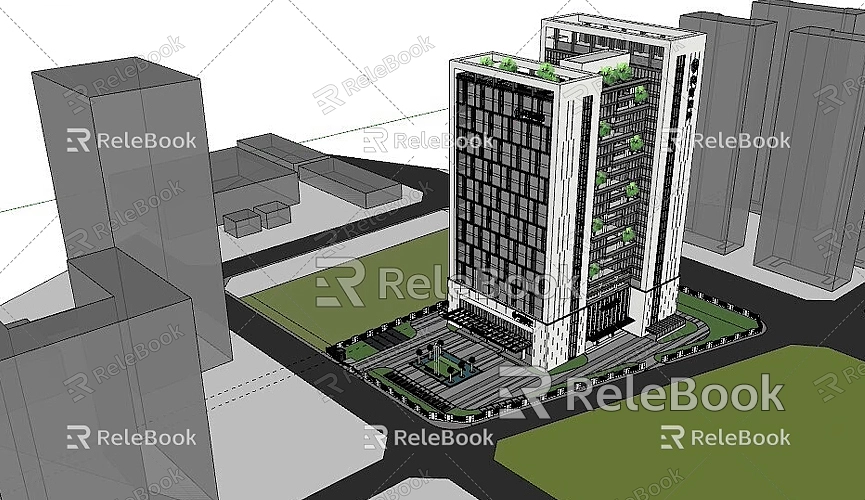How to Add Landscape to a SketchUp Model
In the fields of architecture and interior design, landscape design is often an essential part of any project. A well-executed landscape not only enhances the overall aesthetics but also effectively communicates the design concept. This article will detail how to add landscape elements to your SketchUp model, from creating basic terrain to incorporating vegetation, roads, and bodies of water, providing you with a complete solution.
Understanding Basic SketchUp Operations
Before you begin, ensure you have a basic understanding of SketchUp's operations. SketchUp is an intuitive 3D modeling software suitable for architects, designers, and enthusiasts. Familiarizing yourself with its basic tools and features will help you create landscape designs more efficiently.
Creating Basic Terrain
The first step in adding landscape elements in SketchUp is creating the terrain. There are several methods to achieve this:
Importing Terrain Data
If you have specific terrain data, you can use SketchUp's terrain tools to import it directly. This method is ideal for projects that require precise topographical information. You can select "Import" from the "File" menu and locate the appropriate terrain data file. SketchUp will automatically generate the corresponding terrain.

Manually Drawing Terrain
If you don't have terrain data, you can create the terrain manually using drawing tools. Select the "Line" tool to outline the ground shape you need. Once completed, use the "Push/Pull" tool to raise it to the desired height, forming the basic terrain.
Using Terrain Plugins
SketchUp's Extension Warehouse offers various plugins designed specifically for creating complex terrains, such as "Artisan" or "Sandbox" tools. These tools provide more control options to create more natural terrain curves.
Adding Vegetation
Vegetation is a crucial component of landscape design. Adding plants in SketchUp not only enhances the realism of the model but also makes the design more vibrant. Here are several methods for adding vegetation:
Using 3D Model Libraries
SketchUp's 3D Warehouse contains a vast array of free plant models. You can search for the desired plants directly within the software, select appropriate models, and import them into your scene. Place the plant models on the terrain and adjust their size and orientation for a more natural appearance.
Customizing Plant Models
If you prefer more personalized plant models, you can manually draw them using SketchUp’s drawing tools. Start by outlining the shape of the plant, then use the "Push/Pull" or "Rotate" tool to complete its form. While this method requires more time, it better meets your design needs.

Using Textures and Materials
To enhance the realism of plant models, apply different materials and textures to simulate the surface of the plants. Choose suitable colors and textures to make the vegetation appear more lifelike. When using textures in SketchUp, ensure they have a high enough resolution to avoid blurriness when zoomed in.
Adding Roads and Bodies of Water
In landscape design, the layout of roads and water bodies is equally important. These elements not only provide structure to the model but also guide the viewer's eye.
Drawing Roads
In SketchUp, you can use the "Line" tool to outline the road's shape, then use the "Push/Pull" tool to elevate it to the appropriate height. Select suitable materials for the road to simulate concrete or asphalt, making it look more realistic.
Adding Bodies of Water
To add water bodies, create a flat surface and apply a transparent material. In SketchUp, first draw a plane that fits the shape of the water body, then apply a material that simulates water. Choose an appropriate water texture from the materials library, ensuring its transparency and gloss settings are adjusted correctly.
Lighting and Shadows
The effects of lighting and shadows in SketchUp can significantly influence landscape design. Proper light and shadow variations can add depth to the landscape.
Adding Sunlight
In the "View" menu, you can adjust the direction and intensity of sunlight. Set different times of day to observe how light interacts with the landscape, ensuring a natural overall effect.
Using Shadow Features
Enabling the shadow feature allows you to see real-time changes in light and shadow effects. Regularly check the shadow impacts during the design process to help adjust the positions of plants and other elements, ensuring overall harmony.
Optimizing Model Performance
As the complexity of your model increases, SketchUp's performance may be affected. To ensure a smooth operating experience, consider optimizing your model.
Reducing Unnecessary Details
Avoid adding overly intricate details, such as excessively complex plant models. Selecting an appropriate Level of Detail (LOD) can significantly reduce the complexity of the model.
Using Components
Convert repeated elements (like identical plants or roads) into components to greatly reduce file size and improve performance. Once created, any changes to components will automatically update throughout the model.
Resource Acquisition
Using high-quality 3D textures and HDRIs can significantly enhance the visual quality of your models and virtual scenes. If you need many high-quality textures and HDRIs for your projects, you can download them for free from [Relebook](https://textures.relebook.com/). For exquisite 3D models, visit [Relebook](https://3dmodels.relebook.com/) to access a wide range of premium resources that support your design work.
Adding landscape elements in SketchUp is a creative task. By mastering the basics of terrain creation, vegetation addition, and the design of roads and water bodies, you can effectively enhance the overall quality of your model. Additionally, judicious use of lighting and shadow, along with model optimization, are vital steps in improving design quality. We hope this guide helps you create more engaging landscape designs in SketchUp, sparking your creative inspiration!

